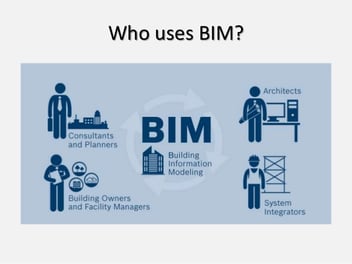Adoddle has enterprise search built-in; enabling organizations to turn “big data” - petabytes of...

No matter what product or service you sell, you probably rely on suppliers.
In the construction industry, your supply chain can be your materials, equipment, and labor. For example, it can refer to a crane coming off a truck or a large HVAC component or just about anything in-between—depending on whether you’re a subcontractor, GC, or owner.
What sort of relationships do you have with your suppliers?
Strong supplier relationships can help you discover underperforming suppliers and enhance the success of your business by decreasing supply issues. You’ll also gain more favorable delivery schedules, better pricing, general customer favoritism, product education, and other business collaboration or referrals.
When companies do not experience disruptions or issues in their supply chain, there is a temptation to move ahead based on past performance and take their “hands off the wheel” when it comes to managing supplier relationships.
This is a reactive approach; it is better to take a strategic approach by establishing relationships with (potential) suppliers even before signing a supplier agreement.
You should have conversations with them about your needs and their products and performance. Consider how they treat you. How long does it take for them to get back to you? Do you feel valued? Or are they more interested in only a transactional relationship?
There is a human element to supplier relationships.
Here are five tips to enhance your supplier relationships and eliminate any underperforming suppliers.
1. Research New (and Existing) Suppliers
When you are looking for a new supplier, you will need to research a number of competitive companies and maybe even the market itself. With McKinsey predicting companies can expect supply chain disruptions lasting a month or longer to occur more often—every 3.7 years—gathering the right supplier and market data is crucial when selecting and evaluating suppliers.
When speaking with suppliers ask for references and examples of their work. You also need to discover the answers to a standard set of questions. The nature of the supplier will require more specific questions. Here are some general questions to answer regardless of the nature of the supplier.
1. Do they appear to have the capability and capacity to handle your needs?
2. How long have they been in business?
3. Is the business growing?
4. Do they appear financially stable?
5. Who are their other clients?
6. Are they competitively priced?
7. What is their turnaround time once an order is placed?
8. How often do they fail to deliver on time?
Also, how well do you know your current suppliers? It may be worth revisiting previous supplier selections.
Look for risks and mitigate them. If your supplier fails to deliver, this could disrupt everyone down the supply chain and impact your ability to deliver to your customers. A supply chain is only as strong as its weakest link. You should root out weak suppliers, so they don’t become weak links.

2. Communicate Clearly, Proactively, and Regularly
Communicate your needs and desires in a clear way, so there is no misunderstanding.
Be specific about all relevant information (service or product description, price, delivery terms, payment terms, and communication plan), other responsibilities, and contingencies. Be proactive about your wants and expectations. Also, be proactive when potential issues arise.
Communicate regularly to show the supplier you care about the relationship. If you work your supplier relationships—and the suppliers are open to it—you and the supplier become partners in each other’s success. So, if a problem arises—if either party can’t meet the terms of the supplier agreement—it becomes easier to address and resolve it if both companies feel like they are partnered.
3. Be a Business with Whom Companies Want to do Business
A relationship is a two-way street. Just as you can drop suppliers that don’t perform to expectations, suppliers can choose to stop serving a customer who treats the supplier poorly or regularly fails to meet the terms of the supplier service agreement or behaves in ways with which the supplier doesn’t want to be associated.
Most companies want to work with other companies that act ethically and meet or exceed expectations.
With the CIOB stating firms take anywhere from 34 days to 81 days to pay suppliers, probably the fastest way to lose a supplier is to fail to make payments on time. Everyone has bills to pay. Customers not paying suppliers impacts the cash flow of that company. Just as you want reliable delivery of product, they want reliable payments.

4. Digitize Your Supplier Relationship Information
By digitizing supplier relationship data, your company can be more efficient in capturing critical information from your supply chain. Data becomes easier to retrieve, organize, and evaluate.
Staff can more easily file purchase agreements and contracts, look up supplier information, order supplies, and track deliveries. They can also save hours of labor tracking down signatures and approvals, since POs and REQs are addressed within a supplier relationship management (SRM) software.
Also, some SRM software allows you to streamline the supplier pre-qualification process with a single tool that updates the credentials of your existing supply chain based on new project requirements. Some can even connect you to new suppliers.
You can also decrease the risk of vendor selection by securing the right approvals. SRM software with built-in workflows allows for pre-qualification to follow your business process.
Even better, you can customize your experience by creating a list of approved suppliers for future bids. Filter your supply chain and offer bidding opportunities to chosen suppliers based on their trades. With a robust scoring system, you can test subcontractors against the project requirements
Also, digitizing key processes, such as ordering more supplies and renewing contracts, eliminates the chance of your company making an error.

5. Use Automation to Streamline Processes and Decrease Errors
When you automate basic or redundant tasks, you can free up time to engage in more productive or more meaningful work. For example, you can track the status of suppliers with automatic reminders and real-time reporting and alerts.
When you use an SRM software with a pre-qualification questionnaire, you can reduce the overhead on stakeholders. Suppliers will answer the questions directly—minus the extra work for internal teams. Project managers and business owners can then focus on vetting suppliers who pass pre-qualification. You can even automate pre-qualification and invitations to bid with an SRM software that integrates with bid management software.
When you can successfully manage your supply chain, you can understand the value of managing effective relationships with your suppliers. You’ll also be more likely to select the vendors that will best support your company.
Ready to know you’re working with suppliers you can trust? Learn more about Asite Supplier Relationship Management now.
Nathan Medcalf
Nathan Medcalf writes about technology, heavy equipment, and construction for numerous clients and has been published in more than 30 trade publications since 2006.
Asite Insights in your inbox.
Sign up for product news and our latest insights published monthly. It's a newsletter so hot, even global warming can't keep up.


